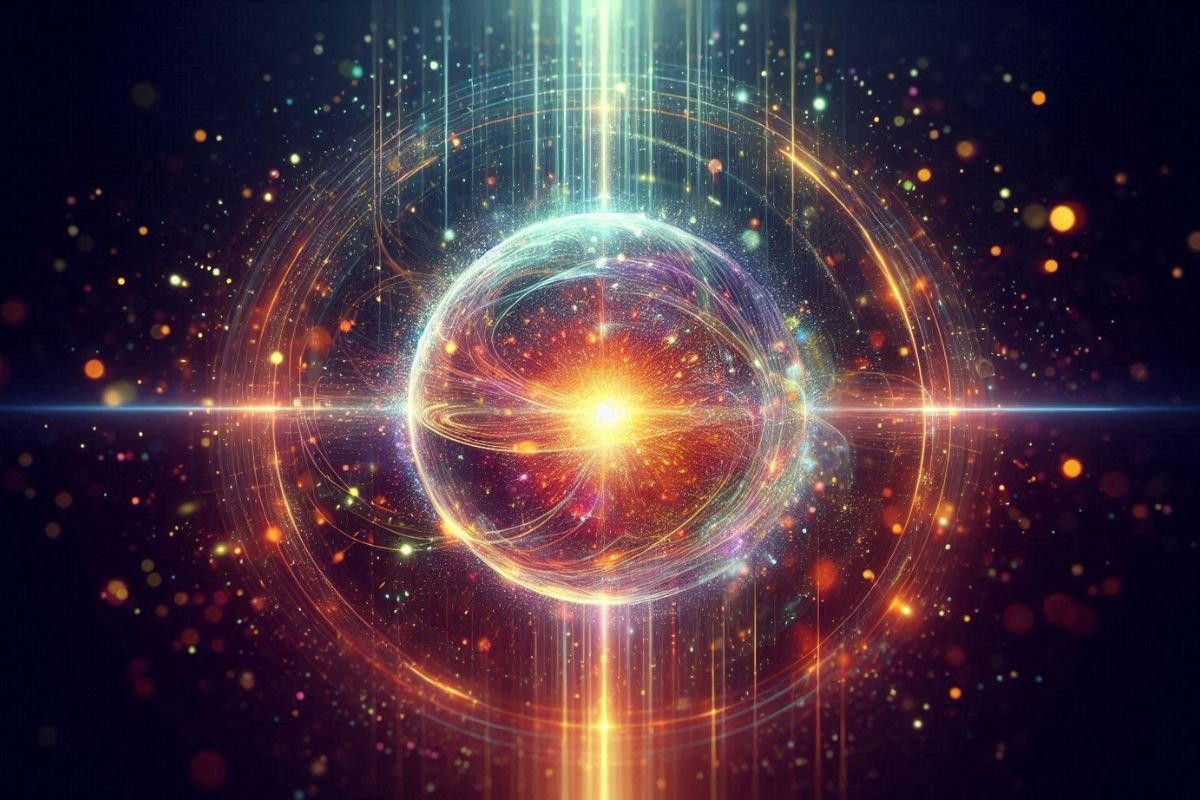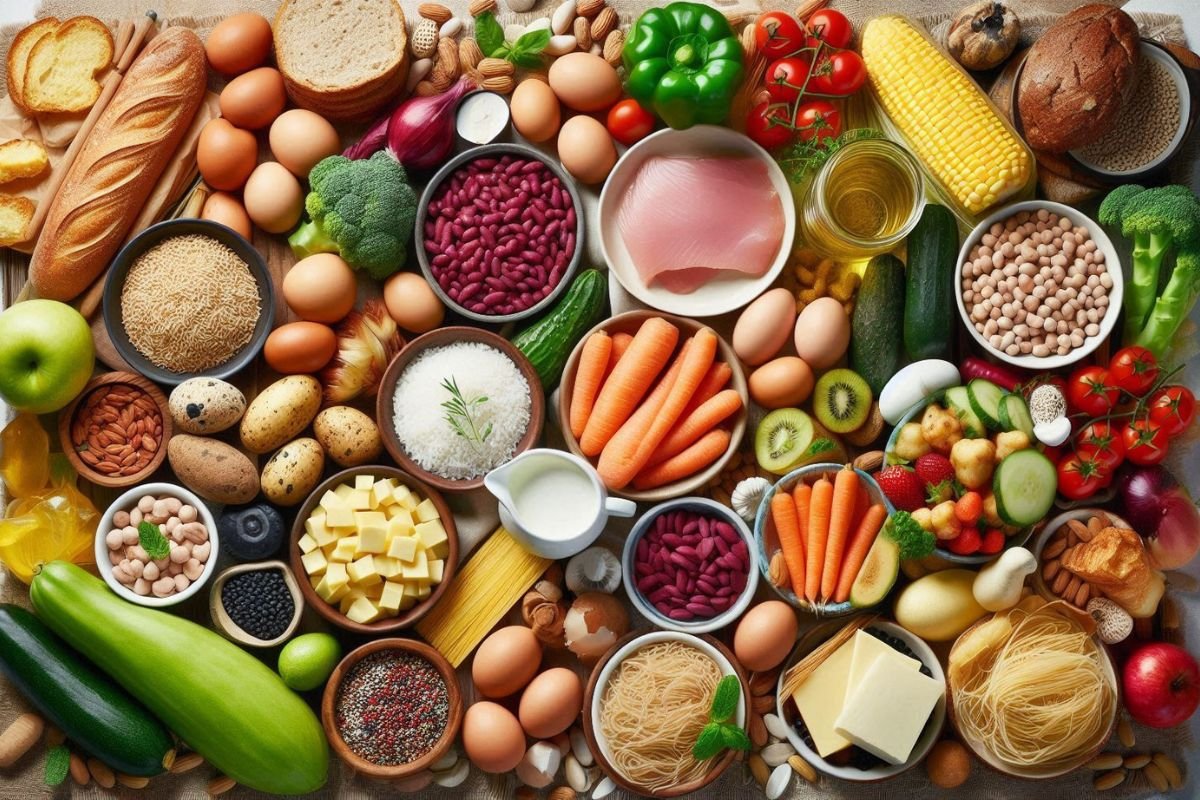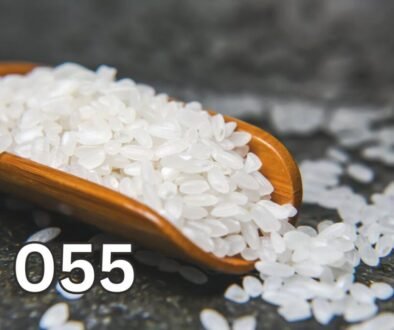Millionaire Babies: Why Everyone Starts Life as a Millionaire

01 OCTOBER 2024
Don’t worry, this isn’t a deep dive into the complexities of human physiology. Instead, we’ll focus on the essentials to ensure we’re all on the same page. From there, I’ll show you how physiology connects to the idea that, at birth, we are all born millionaires, even trillionaires.
The human body is a remarkable, intricate system. At its core, it is made up of matter, consisting of molecules and atoms, which themselves are formed by subatomic particles like protons, neutrons, and electrons. These particles carry energy, which the body biochemically processes to fuel various physiological functions that keep us alive. Some of these essential functions include:
1. Respiration: Breathing in oxygen into the lungs for cellular respiration and breathing out carbon dioxide.
2. Circulation: The heart pumps blood through blood vessels throughout the body, delivering oxygen, nutrients, and hormones to cells and removing waste products.
3. Digestion: Breaking down food into smaller molecules to allow the body to absorb nutrients for energy production.
4. Excretion: Removing waste products through doing a number one, doing a number two, sweat and exhaled air.
5. Metabolism: Converting nutrients from food into energy and building and repairing tissues.
6. Homeostasis: Maintaining a stable internal environment while adjusting to external changes, such as body temperature, pH, and fluid balance.
7. Endocrine System: A group of glands producing hormones that acts as messengers, sent all around the body helping control body functions like mood, growth, development, metabolism, and reproduction.
8. Nervous System: The brain controls and communicates with the body by sending messages through nerves that branch out to every organ and body part.
9. Immune System: Defending the body against bacteria, viruses, infections, and diseases.
10. Reproductive System: Producing more humans.
11. Musculoskeletal System: Using bones, muscles, joints, cartilage, tendons, ligaments, and connective tissues to enable movement, support the body structure, and protect internal organs.
12. Integumentary System: The skin, hair, and nails act as a physical barrier, protecting the body against injury, bacteria, infections, and sunlight.
13. Sensory Perception: Allowing the brain to understand the world through sight, hearing, taste, smell, and touch.
Understanding these basic functions helps us appreciate the intricate workings of our bodies and how they sustain life.
This list is by no means exhaustive; I’m simply keeping things as straightforward as possible. To keep these vital processes running smoothly 24/7, right up until the day we say goodbye, there’s a specific ‘currency’ we need to ‘pay’ for these services. You may have an idea of what it is, but chances are, you don’t know its exact name. This currency is ATP, Adenosine Triphosphate.
You might not have heard of ATP before, but if we approach it from a different angle, you’ll likely recognise the concept. In Eastern philosophies, ATP is often referred to as vital energy, life force, qi, or prana, terms that may be more familiar. These are deeply rooted in Eastern culture.
In contrast, Western scientists require concrete evidence to support any theory. They need observable, measurable proof before accepting an idea. ATP followed this rigorous path. Researchers noticed gaps in our understanding, formulated theories, and conducted extensive research. After being studied, experimented on, and rigorously tested, ATP earned its scientific approval and was officially named.”
The molecule was first discovered by German chemist Karl Lohmann in 1929. Over the following decades, other researchers made groundbreaking advancements in our understanding of ATP. Notably, Hans Adolf Krebs and Fritz Albert Lipmann received the Nobel Prize in 1953 for their work, while Paul D. Boyer, John E. Walker, and Jens C. Skou were honoured with the same prize in 1997 for their contributions, providing empirical evidence and further solidifying ATP’s critical role in biology.
What is ATP?

Adenosine Triphosphate (ATP) is the primary energy currency in virtually every cell in the human body. In fact, ATP is present in all living organisms on Earth, from bacteria to plants, fungi, animals, and other microorganisms. It supplies the vital energy required to perform physiological functions and sustain life. Without a constant supply of ATP, life, much like in Eastern philosophy’s concept of life force, cannot exist.
A common analogy for ATP is “currency”, “money”, or “coins”. Just as we use money for various transactions, our cells “spend” ATP to power countless processes, from cognitive activities like thinking to fundamental functions like breathing.
How is ATP produced?
In simpler terms, how is this “currency” printed? The powerhouse that “prints” most of our ATP is called the mitochondria. While there are smaller sources of ATP production, mitochondria are the primary “bank” that fuels our cells.
The raw material that the “Bank of Mitochondria” uses to generate ATP comes from the nutrients in the food we eat. Here’s a simplified breakdown of the process:
1. Eating: The food we eat contains macronutrients, carbohydrates, fats, and proteins, that serve as the raw materials for ATP production. While micronutrients like vitamins and minerals don’t directly produce ATP, they play a key role in supporting its production and efficiency.
2. Digestion: Once ingested, food is broken down into smaller molecules. Carbohydrates are converted into simple sugars like glucose, fats into fatty acids, and proteins into amino acids. Vitamins and minerals are also absorbed to aid various enzyme functions and other essential processes.
3. Absorption: These smaller molecules are then absorbed into the bloodstream and transported to the body’s cells, specifically to the mitochondria (the “Bank of MT”). Almost every cell in the body contains mitochondria, the powerhouse for ATP production.
4. Cellular Respiration: Inside the mitochondria, ATP is “printed” through a series of chemical reactions. The breakdown of nutrients combines with existing molecules like ADP (adenosine diphosphate) and Pi (inorganic phosphate) to produce ATP. The simplified equation looks like this:
ADP + Pi + Energy (from nutrient breakdown) = ATP
Here’s a creative analogy to visualise the process:
- Mitochondria = the “Bank’s Printer”.
- Nutrients = the “Raw materials”.
- ADP and Pi = the Printer’s “Ink”.
- ATP = “Money”.
Essentially, raw materials from food are processed in the mitochondrial “bank,” where “ink” is applied to produce ATP (the energy currency).
5. Using ATP: Once ATP is produced, it’s ready to be “spent” on the body’s essential functions. The energy release is triggered by water, which helps ATP release the power needed to sustain life and various physiological processes.
6. Regeneration: One of the amazing features of our bodies is that ATP can be regenerated. After ATP releases its energy, ADP and Pi (the “ink”) remain behind, ready to recombine with new nutrients and form ATP again in the mitochondria. This “money-printing” cycle operates continuously, providing a rapid, on-demand supply of energy.
How Much “Money” Do We Print?

A LOT. We’re talking about non-stop printing every single day. It’s not an exaggeration to say that we are born money makers because we start printing ATP from the moment we’re born until the day we say goodbye.
In the Baby Stage: Babies undergo rapid growth, so their demand for ATP is high. It’s reasonable to say that babies are printing ATP in the millions. So, from the get-go, we are all millionaire babies, baby!
In the Child Development Stage: As children continue to grow and engage in even more activities, the demand for ATP spikes even higher. At this stage, children are printing “money” in the region of billions. Just like that, before you know it, that little baby is already a billionaire.
In the Adulthood Stage: Adults have reached their full physical development, requiring the largest amount of ATP to maintain life. This is often the most active period of their lives, with “money” printing at its peak rate, surpassing the daily trillion mark. Becoming a trillionaire is just a matter of time, no sweat.
In the Elderly Stage: With old age, health and physical activities gradually decline, so less ATP is used. Consequently, the demand for printing “money” dips back down to the billions. Even in old age, you’re still a billionaire.
The body doesn’t store large amounts of ATP, we’re not natural “savers.” Why? Because there’s no need. We constantly “print” our own energy currency: ATP is produced and used on demand. It’s like having the money appear right when you need to buy something. So while we don’t store much ATP itself, we do stockpile the raw materials to make it. Simple sugars like glucose are stored in the liver and muscles, fats are stored as body fat, and proteins are stored in muscle tissue.
When it comes to producing ATP, the body has its preferences. It favours glucose over fat and protein. Why? Glucose is quicker and easier to break down, making it perfect for rapid energy needs, such as during intense physical activity.
Once our glucose stores are depleted, the body shifts to using fat. While fat provides more energy per gram and can sustain us longer, it’s more difficult to break down and a slower process overall. So, if glucose is available, the body chooses efficiency, why work harder when you don’t have to? Efficiency is ingrained within us even at a cellular level.
If both glucose and fat reserves run dry, the body turns to its last resort: protein, primarily from muscle tissue. However, this is not ideal. Muscles play critical roles in structure, function, and maintaining overall body health. The body will only break down muscle for ATP in extreme situations, like prolonged fasting or harsh conditions.
It’s important to note that while our storage capacity for glucose and protein is limited, our fat storage is way way way much bigger. Consuming more nutrients than the body needs leads to excess carbohydrates and proteins being converted into fat, which adds to our fat reserves, particularly around the waistline.
These reserves act as a backup energy source that the body taps into when demand for ATP spikes, such as during physical exertion. By understanding these energy preferences, you can influence which reserves your body taps into by managing your nutrient intake.
Manipulating Nutrients

Assuming we are meeting our daily nutritional requirements:
Fat Reserves I Choose You
A low-carbohydrate diet involves reducing carbohydrate intake and increasing dietary fat. When the body lacks sufficient carbohydrates, it shifts from using glucose to fat as its primary source of ATP.
This diet is often used to regulate blood sugar and promote weight loss. Fat consumption tends to make us feel fuller for longer, which can reduce overall food intake.
However, without careful planning, relying too much on fat for energy can lead to potential drawbacks, such as:
- Keto flu: Symptoms like headache, fatigue, and nausea may occur when starting a low-carb diet.
- Kidney stones: Increased fat consumption can lead to higher levels of certain substances that contribute to kidney stones.
- Digestive issues: A lower intake of fibre from carbohydrate-rich vegetables and fruits can cause constipation.
- Nutrient deficiencies: A lack of vitamins and minerals typically found in carbohydrate-rich foods can lead to imbalances.
- Low blood sugar: For individuals on diabetes medications, the diet may lead to dangerously low blood sugar levels.
- Weakened bones: The diet might lack calcium and vitamin D, which are crucial for bone health.
- Heart disease: If not properly balanced with healthy fats, the diet may raise the risk of heart disease due to excess saturated fat consumption.
To avoid these issues, it is essential to carefully plan and monitor nutrient intake while following a low-carb diet that rewires your body to tap into fat reserves for ATP production.
Sugar Is Just Too Irresistible
A low-fat diet involves reducing overall fat intake. Typically, this diet is high in carbohydrates and moderate in protein, making carbohydrates the primary source for ATP production.
The goal of this diet is to promote weight loss, improve heart health, and reduce the risk of cardiovascular disease.
However, there are potential drawbacks to a low-fat diet.
- Increased hunger: Fat contributes to a feeling of fullness, so reducing fat may lead to less satiety and increased carbohydrate consumption.
- Weight gain: Excess carbohydrates and proteins can be converted to fat and stored in the body, potentially leading to weight gain.
- Blood sugar spikes: High carbohydrate intake can cause fluctuations in blood sugar levels, which may be problematic for individuals with insulin resistance or diabetes.
To avoid these issues, it’s important to balance carbohydrate and fat intake while monitoring overall caloric consumption to ensure the diet remains healthy and sustainable if this is the reserve you want to primarily tap into.
I Want More Muscles
A high-protein diet emphasises increased protein intake through lean meats or plant-based sources while reducing carbohydrates and fats. This shift encourages the body to rely more on protein for energy, particularly in combination with strength training, which helps promote muscle growth and repair. The diet is commonly used for building muscle, improving strength, and managing weight.
Protein is more satiating than carbohydrates or fats, helping you feel full longer and potentially reducing overall calorie intake, which supports weight loss goals.
However, this diet can have potential drawbacks:
- Nutrient imbalance: Restricting carbohydrates and fats may result in an inadequate intake of essential nutrients.
- Digestive issues: Low fibre intake from a reduction in carb-based foods can lead to constipation.
- Kidney stress: High protein intake, particularly from meat, can place added strain on the kidneys and increase the risk of kidney stones.
Balancing protein intake with sufficient carbohydrates and fats, along with proper hydration, can help mitigate these risks.
Can’t Beat A Balanced Diet
A balanced diet emphasises consuming all essential nutrients in moderation, not too little, not too much, but just enough. This approach ensures that the body receives a wide variety of nutrients in optimal amounts, supporting efficient and natural ATP production without the risks associated with restrictive diets or nutrient manipulation.
The goal of a balanced diet is to support overall health, prevent nutrient deficiencies, and maintain optimal body function. By incorporating a wide range of foods, carbohydrates, proteins, fats, vitamins, and minerals, you help sustain your body’s energy, promote well-being, and reduce the risk of diet-related illnesses.
A balanced diet is considered a sustainable and holistic approach to nutrition, offering long-term health benefits. However, it’s not just about what you eat, but also how it’s prepared. The way food is prepared and cooked can significantly impact its nutrient content, affecting both ATP production and your overall health.
Ultra-Processed Food vs. Homemade Food

The body’s ability to produce ATP, our essential energy source, is greatly impacted by the balance and quality of the nutrients we eat.
Ultra-processed foods (UPFs) are products that have undergone significant industrial processing. They often contain additives, preservatives, emulsifiers, colourings, and low-quality ingredients. To make up for their lack of nutritional value, UPFs are typically packed with unhealthy fats, sugars, salt, artificial flavours, and refined carbohydrates, most of which have had their natural nutrients stripped away. These foods are designed to be cheap, have a long shelf life, and are convenient to prepare.
However, the downside is that UPFs lack essential macronutrients, micronutrients, and dietary fibre. This not only harms overall health but also reduces the body’s efficiency in producing ATP, which is crucial for our daily physiological functions.
On the other hand, homemade meals, whether prepared at home or by professional cooks using whole, minimally processed ingredients, provide rich sources of essential nutrients. Fresh, whole foods offer the vitamins, minerals, and energy the body needs to function optimally. When we cook our own meals or choose eateries that focus on quality ingredients, we can be more confident in the nutritional value of the food, directly supporting efficient ATP production.
Choosing homemade food over ultra-processed options can significantly improve health, boost energy production, and lower the risk of diet-related diseases.
Cooking Made Easy

Cooking can be fun, therapeutic, and rewarding, especially with the right tools and gadgets. However, if you prefer to improvise rather than follow instructions, the result may not always turn out as expected. Sometimes, it might look odd or taste “funny,” but who knows? You might accidentally create something completely new, like the next Coca-Cola! In that sense, not only are you generating billions of ATP internally, but you could also stumble upon a billion-dollar idea.
Before diving into improvisation, it’s best to start with tried-and-true recipes. Once you’ve mastered the basics, feel free to add your personal twist. The internet is a goldmine of cooking resources, offering countless recipes and video tutorials for nearly any cuisine. With new content being added daily, you’ll never run out of ideas.
Don’t limit yourself to easy dishes; take on some challenges as well. Learning from your mistakes will sharpen your skills and deepen your love for food. The satisfaction of baking a cake or whipping up a homemade dish is undeniably charming and impressive.
To elevate both your cooking and dining experience, consider upgrading your kitchen and dining space. You don’t have to go overboard, small changes can make a big impact. A stylish dining table, chic lighting, elegant chairs, fine china, and gourmet appliances can completely transform the atmosphere.
If you have the space and budget, think about merging your kitchen and dining areas into an open-concept space. Renovating with elegant décor and luxurious furnishings can make the space a reflection of your personal style and enhance your overall culinary experience.
Conclusion

Let’s recap: Every life form on Earth, including us, relies on a universal energy currency called ATP to function. When ATP is used, it releases energy that powers everything we do, from thinking to moving. We don’t need to earn this currency; we’re born with the ability to create it from within, making us, in a sense, millionaires from the moment we’re born, and eventually, trillionaires as we continue producing ATP throughout our lives. The power to generate this internal wealth has always been within us, though many remain unaware of it.
Pause for a moment, this realisation can be especially powerful for those who believe in manifestation. Recognising that we are born with internal abundance, that we are already self-made millionaires, billionaires, and trillionaires, can be transformative. By combining this understanding with the mindset of manifesting wealth, health, and overall abundance, we can align our internal ATP “wealth” with our external goals. While ATP production is an innate ability, creating external wealth depends on our actions and accumulation.
The most effective way to ensure our bodies produce trillions of ATP daily is through a balanced diet rich in whole, minimally processed foods. This ensures a steady supply of nutrients needed for optimal energy production. Homemade meals, free from artificial additives, are the best way to prepare these ingredients, ideally in an environment that enhances both the cooking and dining experience.
The discovery of ATP was groundbreaking, but research continues to evolve. Scientists are now exploring how ATP could be used to accelerate healing, treat illnesses, and enhance medicines. Since ATP fuels all physiological functions, manipulating its production could unlock improvements in cognitive abilities, physical strength, health, and even slow aging, perhaps extending lifespan itself.
Could any of this really become possible in the future? It seems highly likely. What do you think?
I hope you enjoyed reading this article as much as I enjoyed writing it! Looking forward to seeing you in the next post.



